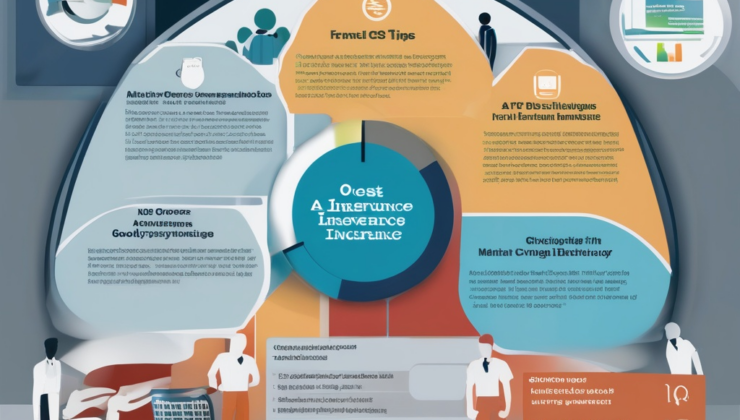

Auto insurance can be a financial burden, but understanding your coverage options can help you secure a policy that offers the protection you need at a price you can afford. With a range of coverage options available, it’s essential to know what each type offers and how it affects your premium. This knowledge empowers you to make informed decisions tailored to your needs and budget.
When it comes to auto insurance, it’s not a one-size-fits-all scenario. Various coverage options are available, each designed to protect you in different situations. Knowing the different types of coverage can help you decide which ones are necessary for your circumstances.
Liability Coverage is mandatory in most states and covers damages and injuries to others when you’re at fault in an accident. While it does not cover your own losses, it is typically the cheapest option available, making it a foundational element of any insurance policy.
Collision Coverage helps pay for repairs to your car after an accident, regardless of who was at fault. Although not required by law, it’s a wise choice if you have a newer or more expensive vehicle.
Comprehensive Coverage offers protection against non-collision-related incidents, such as theft, vandalism, and natural disasters. Like collision coverage, it’s optional but can be beneficial depending on your geographical area and risk factors.
Choosing the right auto insurance policy involves more than just picking the cheapest option. You’ll want to ensure you’re getting the most value for your money, and that involves careful comparison and evaluation.
Review Your Current Policy: Start by understanding what coverage you currently have and if it meets your needs. Note any gaps or areas where you may be overinsured.
Get Multiple Quotes: Shopping around is crucial. Request quotes from several insurance providers to compare rates and coverage options. Use online comparison tools to make this process more efficient.
Assess Deductibles: A higher deductible can lower your premium, but ensure you can afford the deductible in case of an accident.
Consider Discounts: Many insurers offer discounts for safe driving, bundling policies, or having certain safety features in your vehicle. Inquire about these savings opportunities to reduce your premium further.
Armed with knowledge about the types of coverage and how to compare them, the next step is to make informed decisions that align with your financial and personal priorities.
Prioritize Essential Coverage: Focus on what you truly need. If you drive an older car, you might opt-out of comprehensive and collision coverage. Conversely, if you have a high-value car, these options could be crucial.
Evaluate Your Risk: Consider your driving habits, the local crime rate, and weather conditions. These factors can inform which types of coverage are most beneficial to you.
Reassess Annually: Your insurance needs may change over time, so review your policy each year to ensure it still meets your needs. Adjust your coverage as necessary to avoid overpaying.
By understanding your insurance coverage options and following these strategic steps, you can secure a policy that not only meets your needs but also fits your budget. Investing time in research and evaluation can lead to significant savings on your auto insurance premiums.
Finding affordable auto insurance can feel like an uphill battle, especially with the myriad of factors that influence your premium. However, with strategic planning and informed decision-making, you can reduce your insurance costs without compromising on necessary coverage. By following a few key strategies, you can secure a policy that aligns with your financial goals while ensuring adequate protection.
The path to cheaper auto insurance often begins with smart shopping techniques. By digging deeper into what insurers offer, you can uncover discounts and savings opportunities that are not immediately apparent. This approach requires a bit of legwork but can result in substantial savings over time.
In today’s digital age, technology can be a powerful ally in reducing your auto insurance premiums. Insurers are increasingly turning to tech-based solutions to offer personalized discounts, rewarding drivers for safe and efficient driving habits.
Usage-Based Insurance Programs: Many insurers provide telematics programs that track your driving behavior. Safe driving habits can lead to significant discounts.
Installing Anti-Theft Devices: Vehicles equipped with anti-theft and safety devices often qualify for discounts. Check with your provider to see which devices are eligible.
Sometimes, the most significant savings come from reassessing your personal factors and lifestyle choices. By making slight adjustments in these areas, you may unlock new discounts and lower your overall premium costs.
Improve Your Credit Score: A good credit score can positively impact your auto insurance rates. Consider strategies to improve your credit if it needs a boost.
Optimize Your Vehicle Choice: The car you drive can significantly affect your insurance rates. Consider a model known for safety and reliability to reduce costs.
By exploring these strategies, you can strategically reduce your auto insurance premiums. Remember, investing time in understanding your options and leveraging available resources can lead to substantial long-term savings.
Securing affordable auto insurance isn’t just about understanding coverage types or leveraging discounts; it’s also about choosing the right insurance provider. With a plethora of insurers vying for your attention, evaluating and comparing them plays a crucial role in finding a policy that aligns with your financial goals and offers the protection you need.
When it comes to evaluating insurance providers, knowledge is your best ally. It’s important to research thoroughly and understand what different companies bring to the table. This involves looking beyond just the premium and examining the overall value each insurer offers.
Customer Reviews and Ratings can provide insight into an insurer’s reputation and customer satisfaction levels. Pay attention to feedback on claims handling, customer service, and overall experience.
Financial Stability is another crucial factor. You want an insurer that can fulfill its obligations when the time comes. Check financial ratings from agencies like A.M. Best or Moody’s to ensure the company has a solid financial footing.
Range of Coverage Options: Some insurers offer a broader range of coverages and endorsements than others. Ensure your chosen provider offers the specific coverages you need.
Once you’ve gathered your research, it’s time to compare your options methodically. This ensures you make a well-informed decision that suits your needs and budget.
Here’s a structured approach to evaluating and comparing insurance providers:
By following these steps, you can compare insurance providers effectively, ensuring you select the one that not only offers cheap auto insurance but also meets your personal and financial requirements. Remember, the cheapest policy isn’t always the best; it’s about finding a balance between cost and coverage that suits your unique situation.
ENGLİSH
4 gün önceSİGORTA
4 gün önceSİGORTA
4 gün önceSİGORTA
7 gün önceSİGORTA
9 gün önceSİGORTA
9 gün önceDÜNYA
18 gün önce 1
Elon Musk’s Father: “Admiring Putin is Only Natural”
11503 kez okundu
1
Elon Musk’s Father: “Admiring Putin is Only Natural”
11503 kez okundu
 2
xAI’s Grok Chatbot Introduces Memory Feature to Rival ChatGPT and Google Gemini
10457 kez okundu
2
xAI’s Grok Chatbot Introduces Memory Feature to Rival ChatGPT and Google Gemini
10457 kez okundu
 3
Minnesota’s Proposed Lifeline Auto Insurance Program
9431 kez okundu
3
Minnesota’s Proposed Lifeline Auto Insurance Program
9431 kez okundu
 4
Introducing Vivo Y300 Pro+: A Blend of Power and Affordability
7375 kez okundu
4
Introducing Vivo Y300 Pro+: A Blend of Power and Affordability
7375 kez okundu
 5
What’s the best car insurance for seniors?
6031 kez okundu
5
What’s the best car insurance for seniors?
6031 kez okundu
Veri politikasındaki amaçlarla sınırlı ve mevzuata uygun şekilde çerez konumlandırmaktayız. Detaylar için veri politikamızı inceleyebilirsiniz.